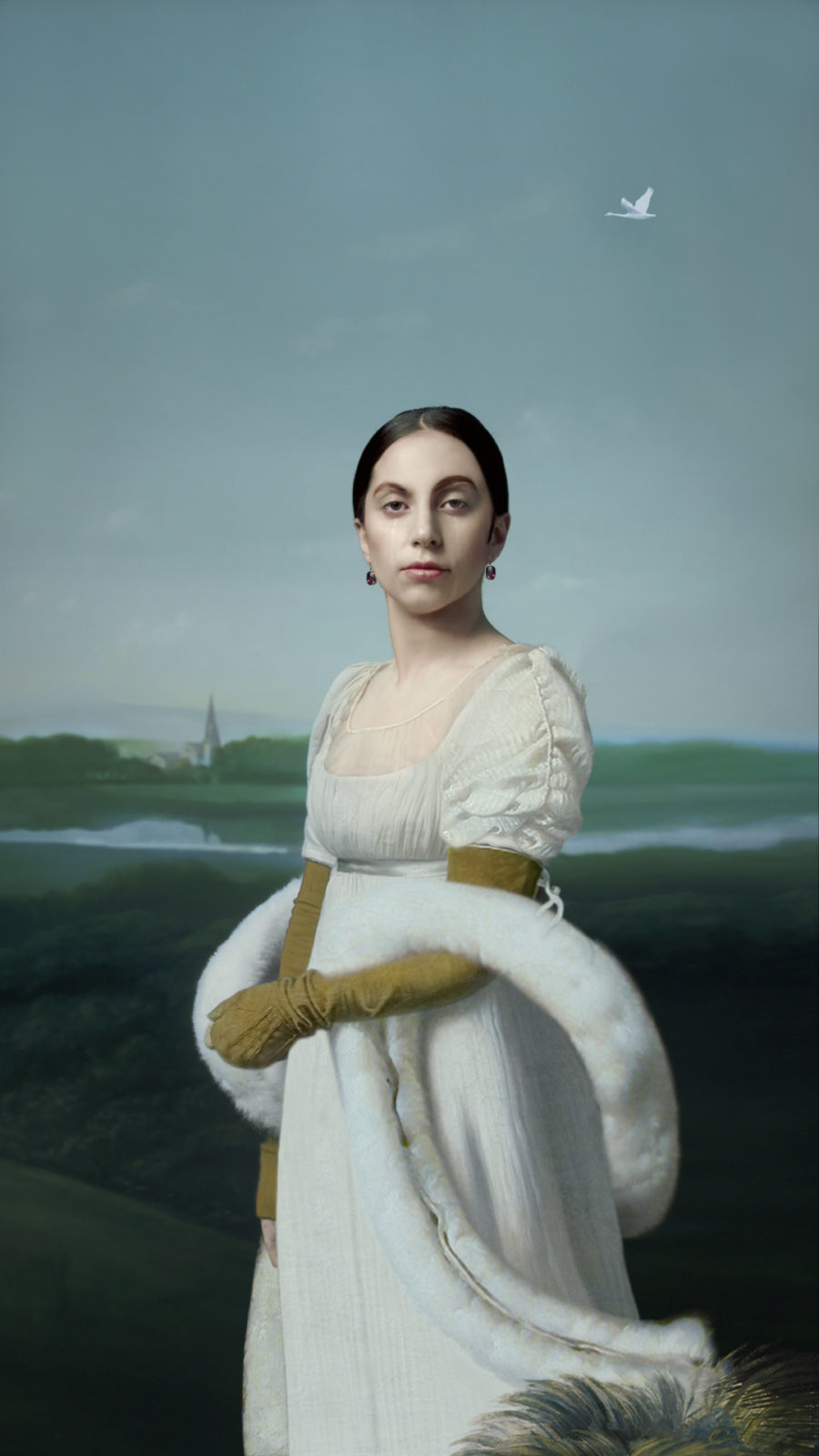
Eye Contact: Portraits in the Global Age
| August 7, 2018 | |
| August 10, 2018 – August 13, 2019 | |
| Digital & Media Art |
For the first time, Art House will exhibit works from the Thoma Foundation’s diverse collections of Spanish colonial painting and digital art in tandem. Opening August 10, Eye Contact approaches portraiture as a sociological art. While portraits are created to commemorate individual identity, they are also reflections of the economic, political, and cultural forces around them, such as world trade, colonialism, and advances in technology.
The three artworks on view span more than two centuries, from 1776 to 2015, with the recent acquisition Lady Gaga: Mademoiselle Caroline Riviere, 2013 as a centerpiece. Robert Wilson’s video portrait depicts the subject in the guise of an early 19th century French aristocrat. It is a powerful and ironic meditation on the ability of portraits to denote immortality. Styled in accordance with the famous painting of Riviere in the Louvre by Neoclassical artist Jean Auguste Dominque Ingres, Lady Gaga inhabits the persona of the original sitter, an elegant teenager who died within a year of the work’s completion. Standing in front of a computer-generated landscape, Lady Gaga holds the foreknowledge of Caroline Riviere’s tragic demise, her gothic pose, intense eye contact, and expression conveying her awareness that even fame fades with time. Wilson is best known for his spectacular, modernist operas, among them the 1976 production Einstein on the Beach, and has been described by the New York Times as “America’s—or even the world’s—foremost avant-garde ‘theater artist.’”
Unlike Lady Gaga and the aristocrat Caroline Riviere, little is known about the woman depicted in Andrés Solano’s Portrait of Ana Josepha de Castañeda y de la Requere from 1776. The inscription on her portrait notes that she was the wife of Juan Lázaro Merino y Zaldo, most likely a sugar planter in the town of Trinidad in central Cuba. While Josepha is forthright and relatively unadorned, the extravagance of her picture frame reflects her position as a wealthy peninsular, a Spanish-born Spaniard residing in the New World or the Spanish East Indies. The gilt rococo embellishments of the frame contrast with Josepha’s frank appearance. Her bloodline is denoted in the painting’s inscription, documenting her caste at a time when cultures, identities, religions, and ideas were mixing in the Spanish colonial world.
Daniel Rozin’s Selfish Gene Mirror, 2015, meanwhile, is a digital mirror in which the viewer temporarily becomes the portrait’s subject. Via a small camera and Rozin’s customized “Darwinian” algorithm, lines of pixels replicate the behavior of human genes, scrambling to assemble a lifelike visage in real time through a process of replication and propagation. Each “gene” is programmed to compete for its ongoing existence. The viewer is reinterpreted within the work of art in a transitory way; once he or she walks away, the pixels die off. The memorializing impulse of portraiture, already imperfect, is abandoned.
ABOUT THE COLLECTION
Spanning the global history of computer art of the past fifty years, the Foundation’s digital art collection includes some of the first algorithmic plotter drawings on paper, software-driven, generative, and custom-coded artworks, interactive works based on real-time gaming platforms, internet-based or networked art, and works that utilize LED and LCD displays. With more than 130 works from the 17th to 19th centuries, the Spanish Colonial art collection includes religious paintings and portraits from the Viceroyalty of Peru and the Kingdom of Nueva Granada, as well as a selection of portraits from the Spanish Caribbean.
